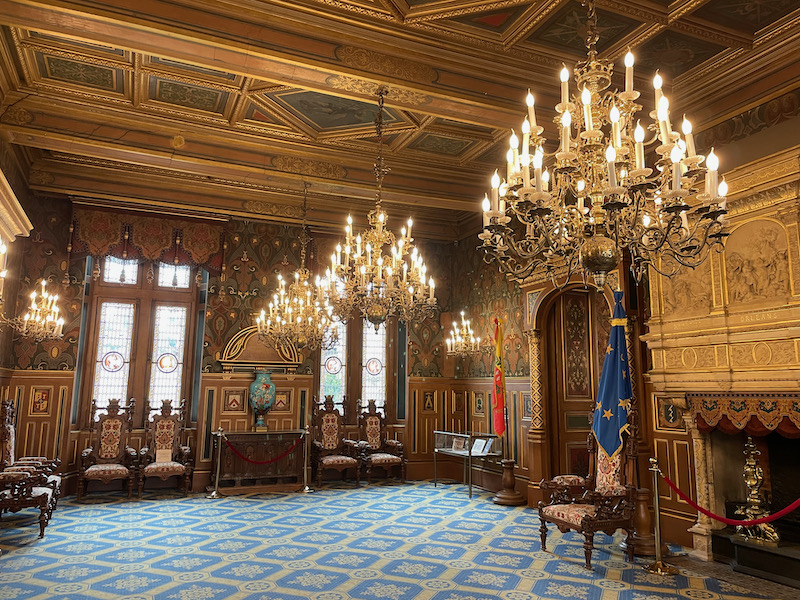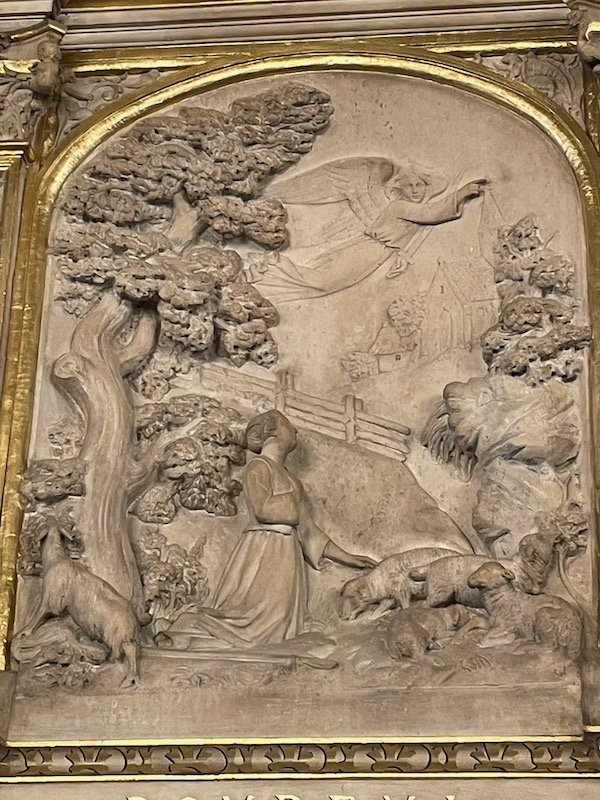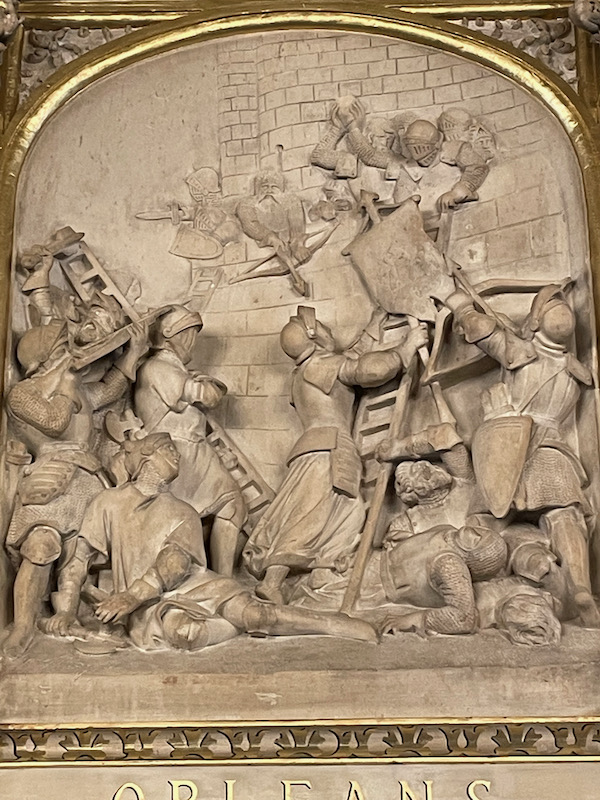Our Blog - Loire Valley Trip - Orléans, France
Orléans is a contemporary university city, today best known for the French heroine Jeanne d'Arc, who liberated the city in 1429 during the Hundred Years War. The site of Orléans has been occupied since ancient times. Cenabum, the name of the settlement founded at this crossing point of the Loire, became a well-known and prosperous city on the north bank of the river protected from flooding. Later conquered by Caesar, it was named Aurelianum in 4 AD. There are still a few remains of Gallo-Roman ramparts from this period visible. In the Middle Ages, Clovis made it the center of one of the 4 Frankish kingdoms. By the 7th century, Paris had eclipsed Orléans and taken over as capital.
It is probably best known for the siege of Orléans during the Hundred Years' War. There was a series of clashes between England and France over succession to the French throne reaching a peak between 1411 and 1435. The arrival of Joan of Arc in 1429 boosted morale among French troops who succeeded in forcing the English to withdraw from Orléans after a 7-month siege. Charles VII was then crowned King and led the campaign to retake Paris. While Joan of Arc was the heroine at this time, she was then captured in 1430 and burned at the stake in 1431. If you have been reading my blog, you'll remember seeing a statue of Joan of Arc in almost every church (maybe every other church), as she is also the Patron Saint of all of France.
Nowhere is her presence felt more than in Place du Martroi, which is the main square. While we didn't venture down to see, in the parking garage underneath this square are vestiges of the old city enclosure from the Gallo-Roman time. Around the square are quite a number of really nice buildings, although some were rebuilt after World War II. The older buildings include the Chancellery and its neighbor, the Chamber of Commerce.
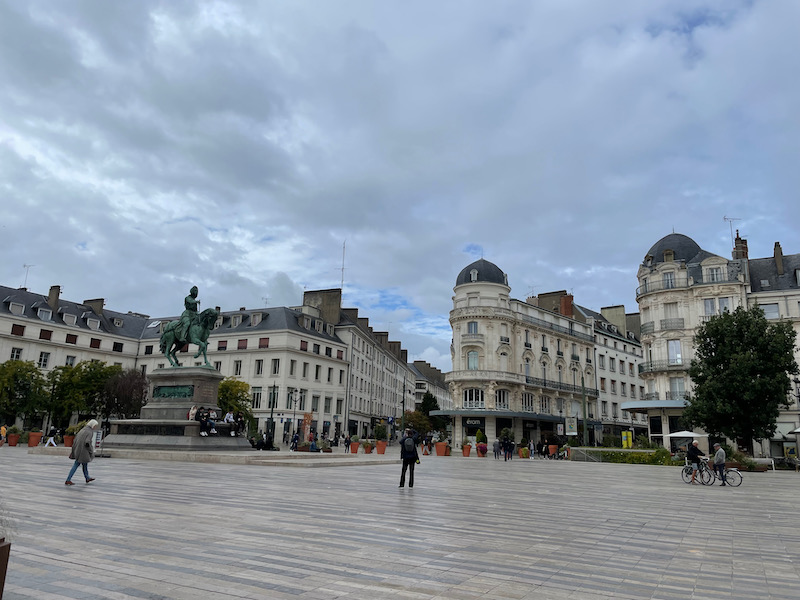
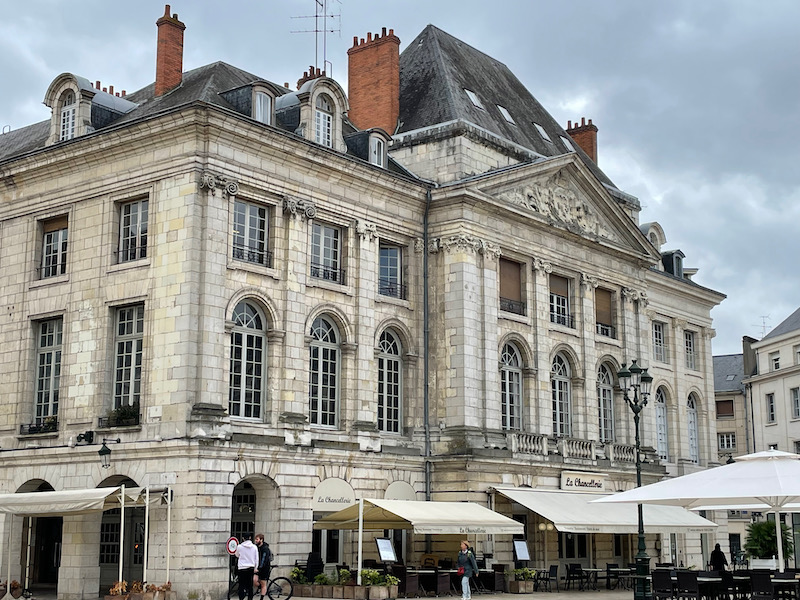
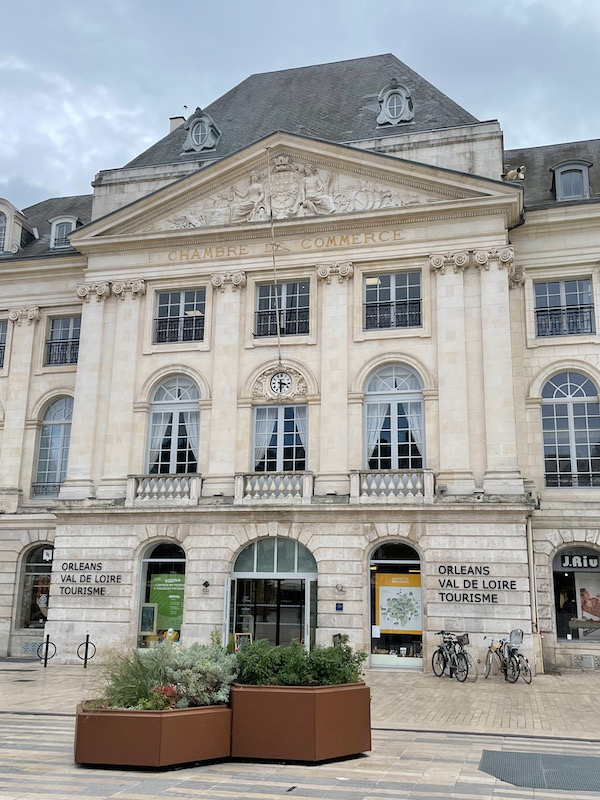
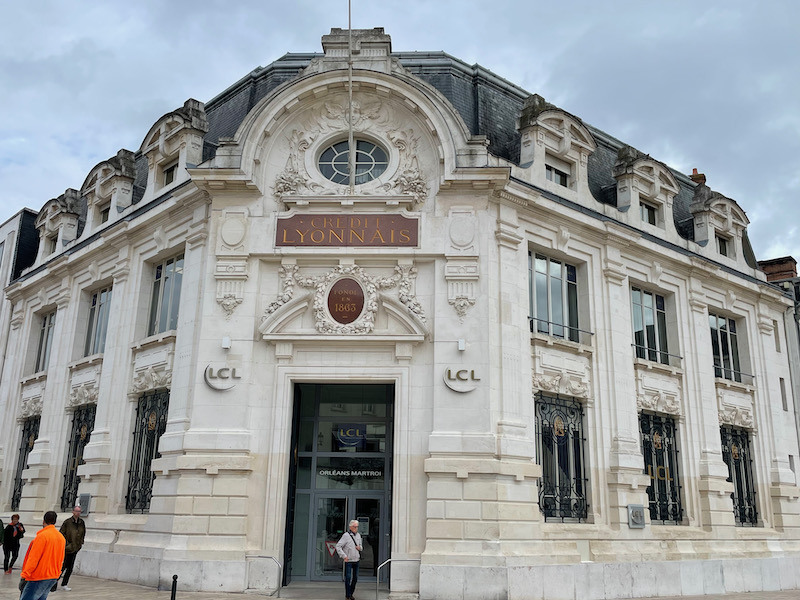
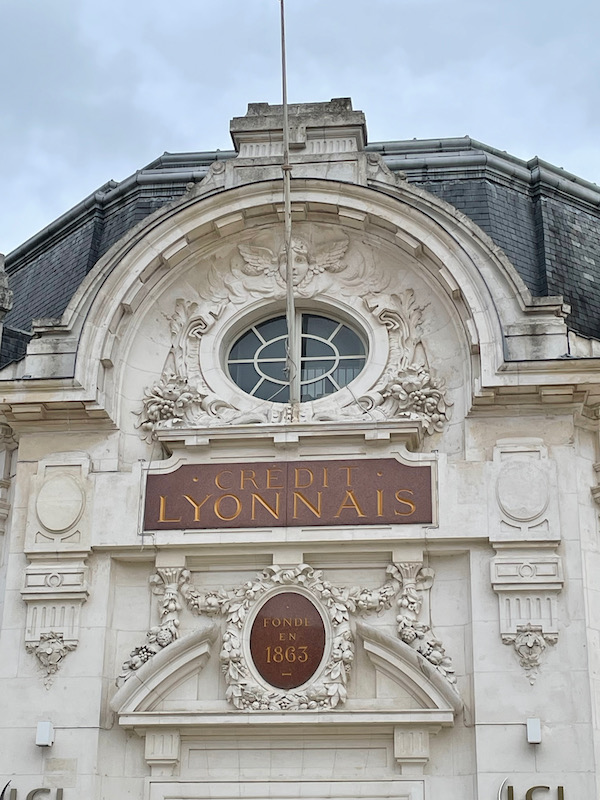

Right in the middle of the square is an equestrian statue of Joan of Arc. Inaugurated in 1855, it represents Joan of Arc giving thanks to God. The bas-relief sculptures on the pedestal depict various scenes from Joan of Arc’s life, from the divine voices heard in her home town that sent her to the future King Charles VII, to her burning at the stake in Rouen. I show 3 of them: her going to the future King Charles VII, her reenergizing the troops during the siege of Orleans, and her death.
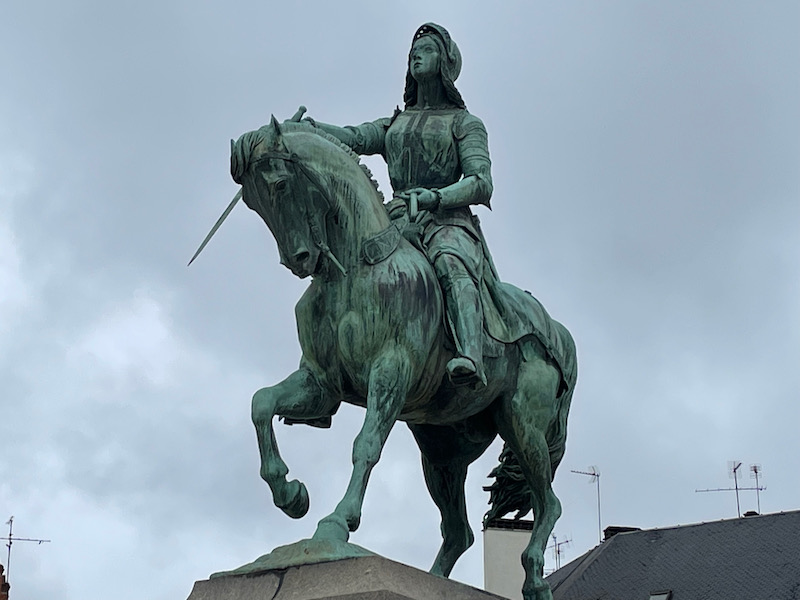
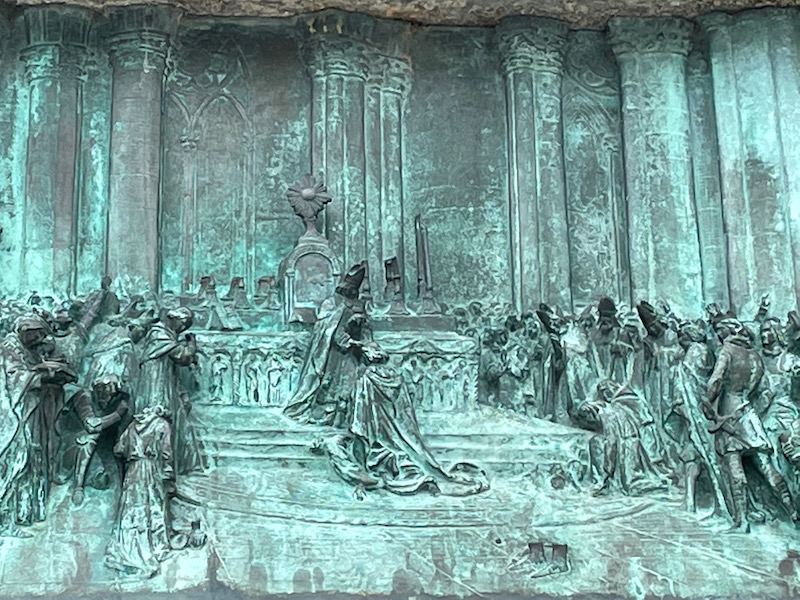
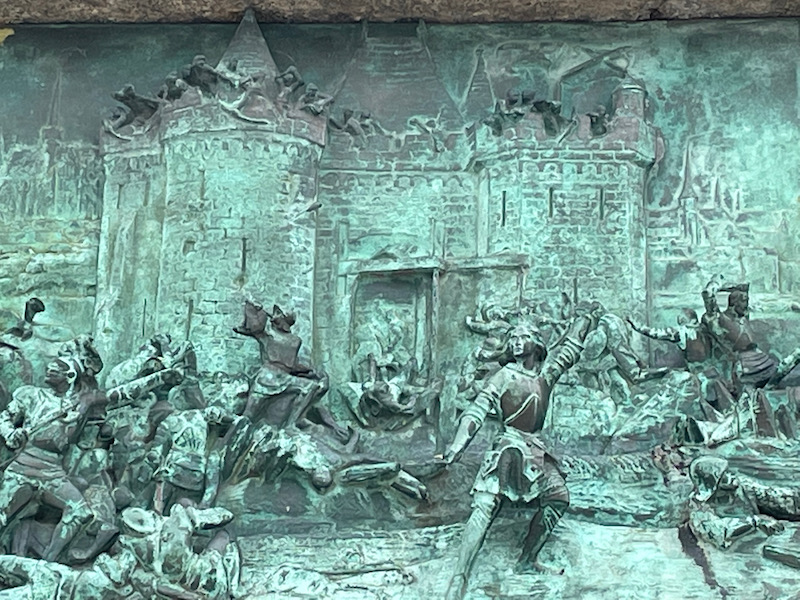
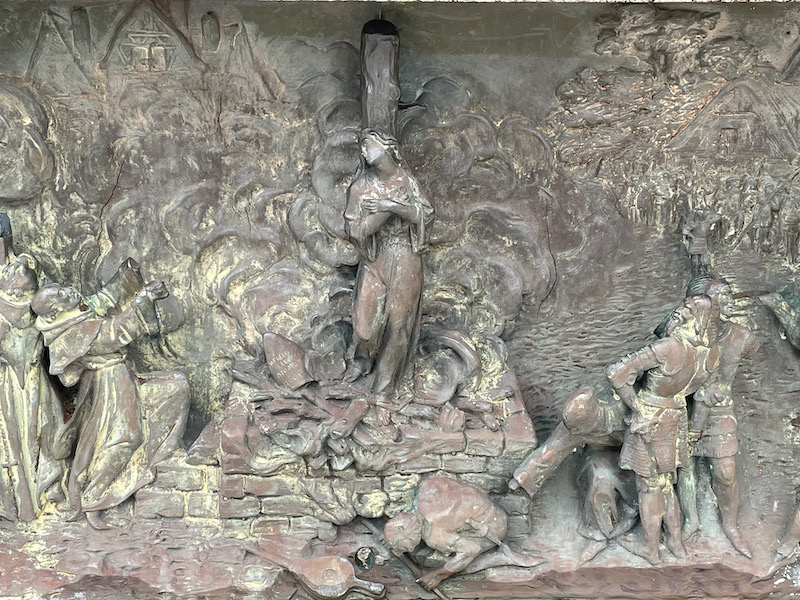
Around the corner from the place and statue is the Maison du Jeanne d'Arc. This is a 1965 reconstruction of the home of Jacques Boucher where Joan of Arc was lodged for a while in 1429. It contains a museum about Joan of Arc and an illustrated chronology of the heroine through the centuries.
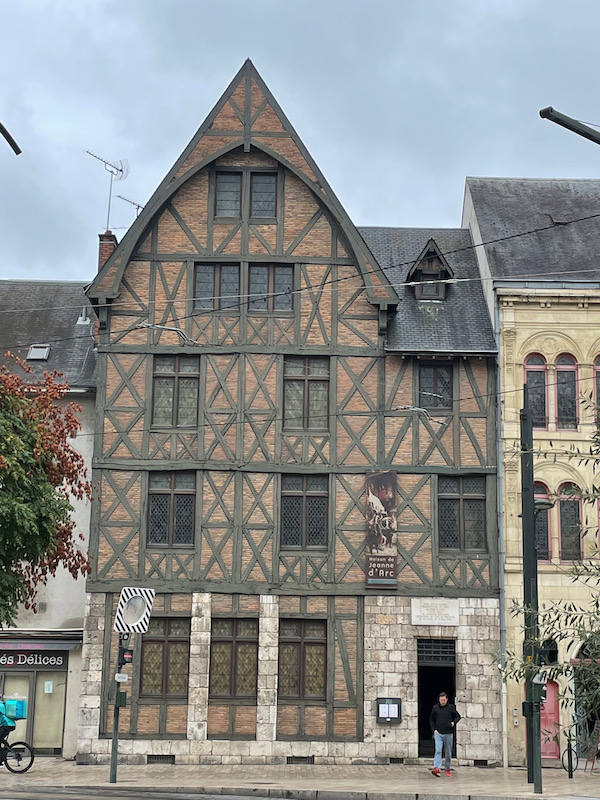
The Pavillon Colas des Francs was built around 1552 by François Colas, lord of the Franks. The home was composed of buildings organized around a courtyard and attached to the Renard gate, which at that time was the West entrance to the city. It is one of the few buildings in the district which escaped the bombardment of 1940 and was restored in 1965.
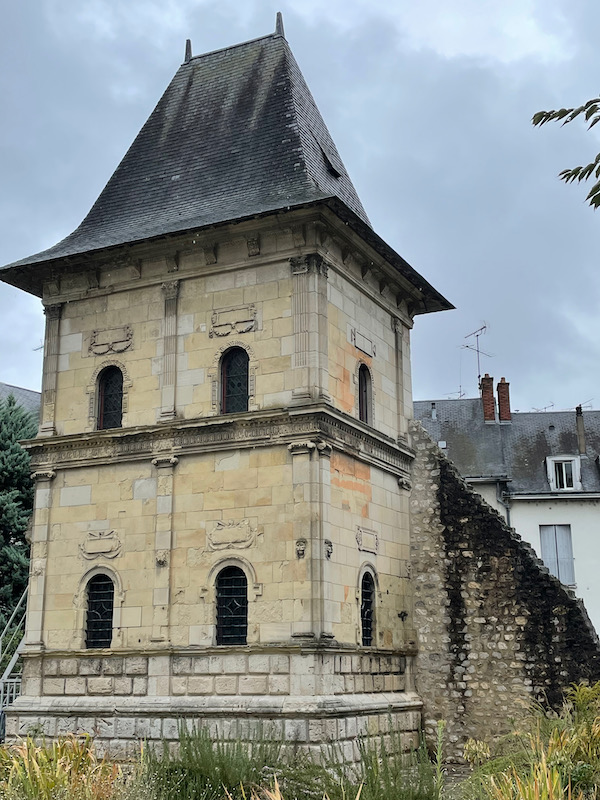
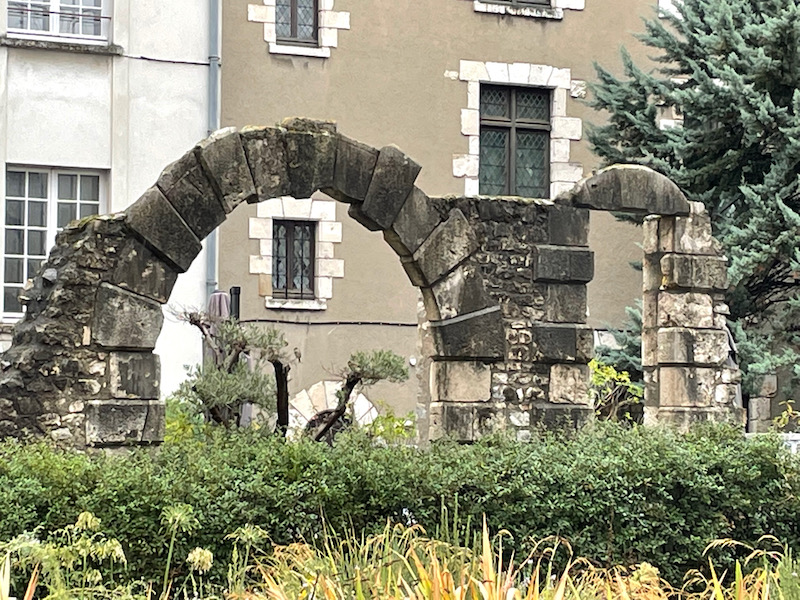
The Eglise Saint-Paul-Notre-Dame-des-Miracles was almost entirely destroyed in 1940 following a fire/bombardment by Nazi troops ... only the bell tower and one chapel survived. The nave was rebuilt in a modern style and the windows are from 1960. On the outside you can see the very modern, square architecture of the new nave, and then the older surviving chapel to the right-hand side. The bell tower is no longer attached.
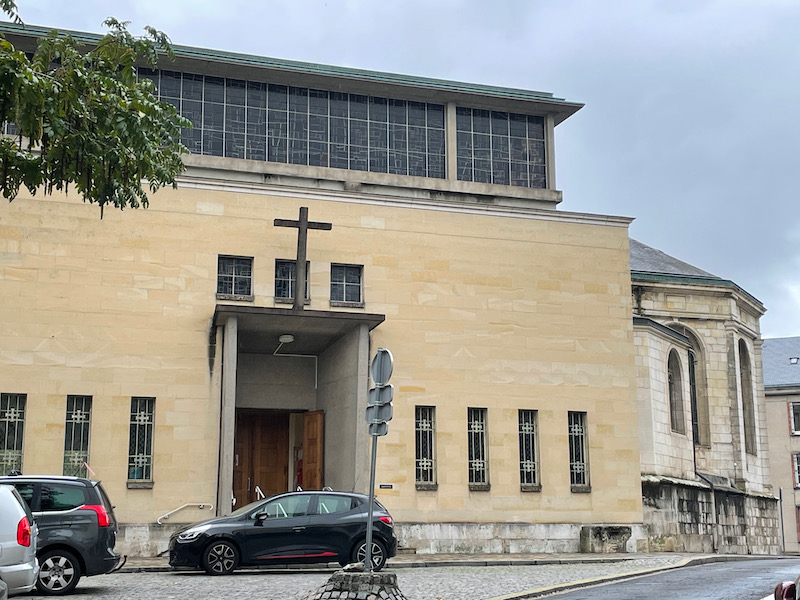
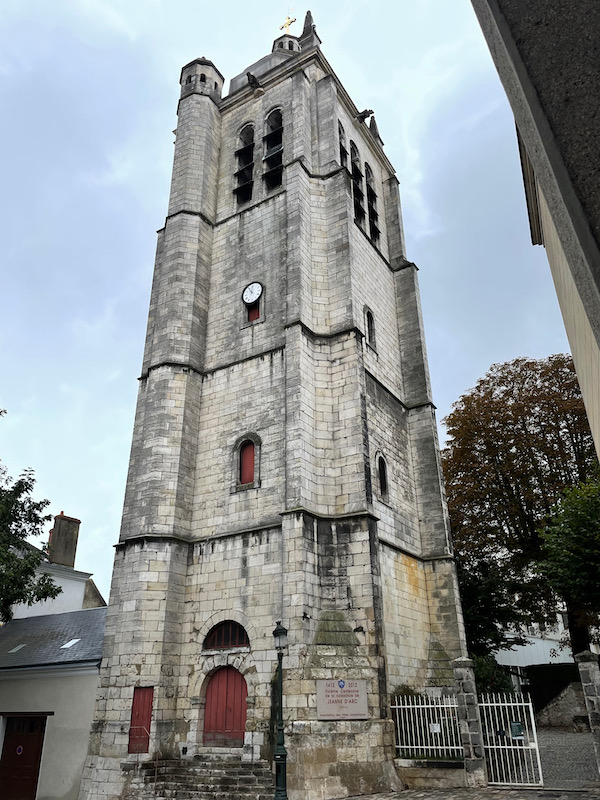
I focused my interior pictures on the chapel that survived but I did want to give a view of how it is incorporated into the modern nave. The mosaic over the entry to the old chapel shows Joan of Arc (of course).
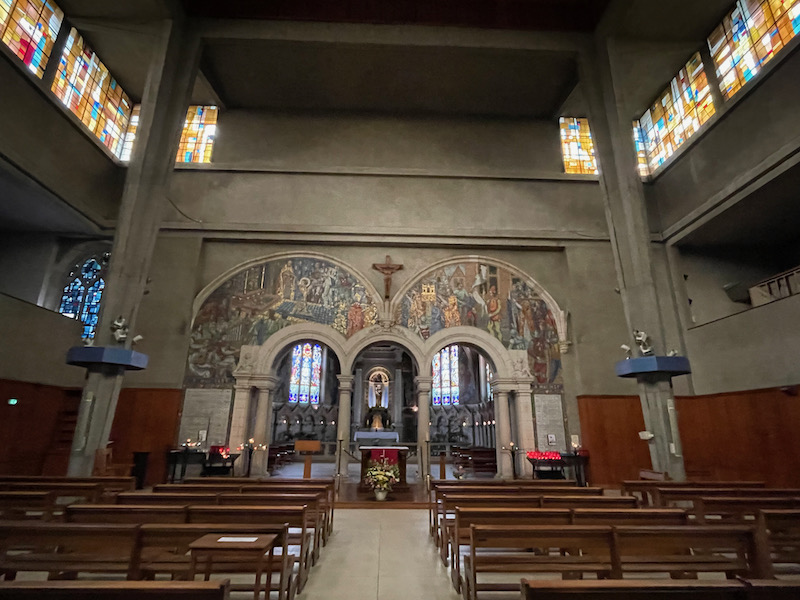
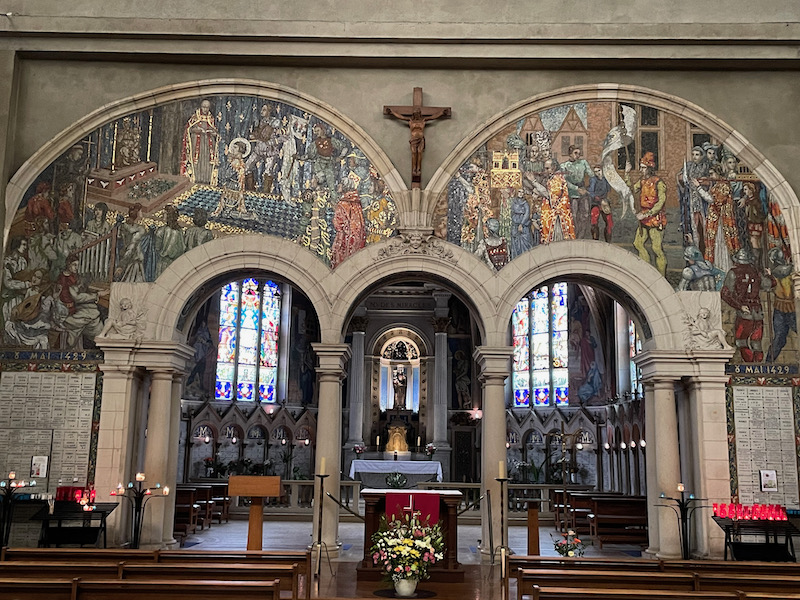
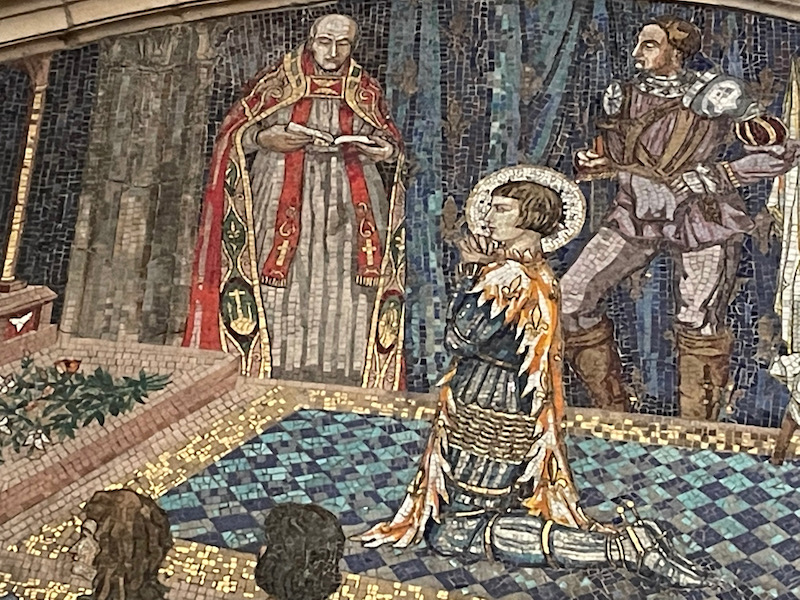
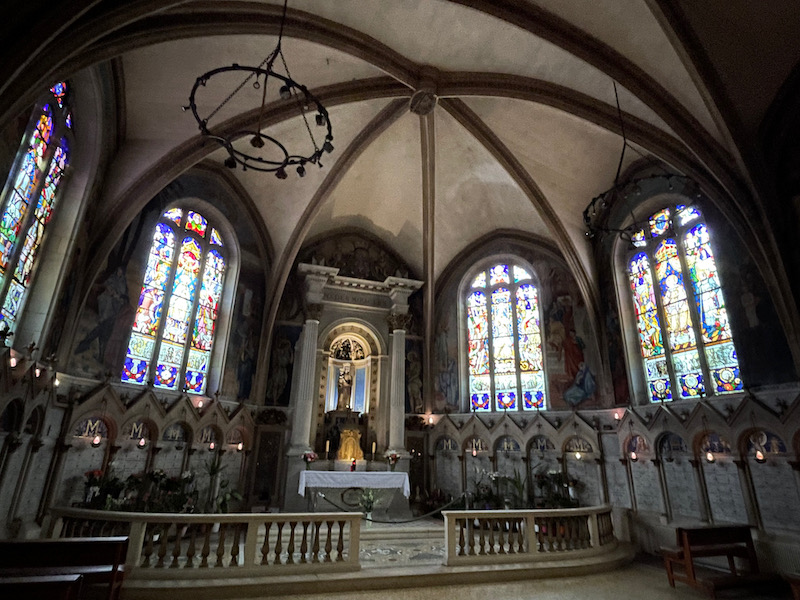
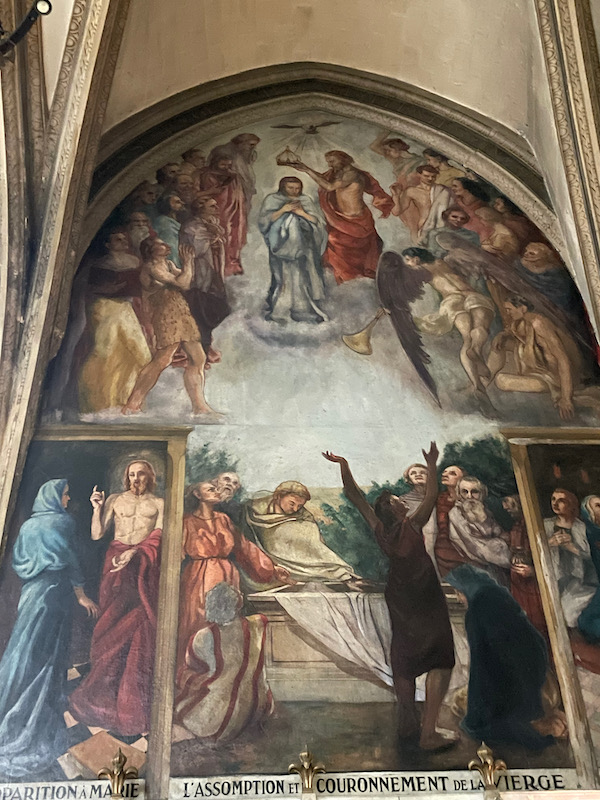
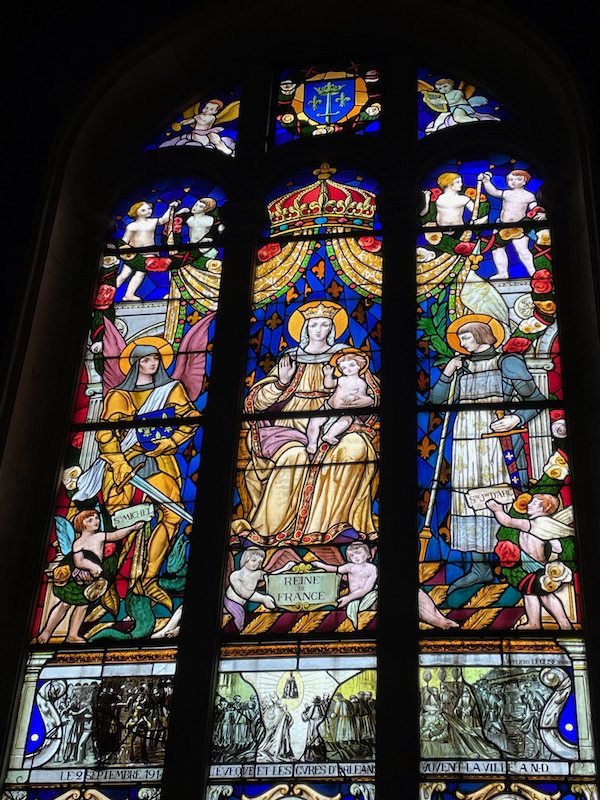
The Gothic Cathédrale Sainte-Croix d'Orléans is one of the most impressive buildings in the city, and right now, the road that goes up to it has large yellow-and-blue flags to show support for Ukraine. It was started by Henri IV beginning in the 13th century and finally completed in the 18th century. Starting in the 1680's, the Western façade was redone, changing it from Romanesque to Gothic, adding a large vestibule or narthex.
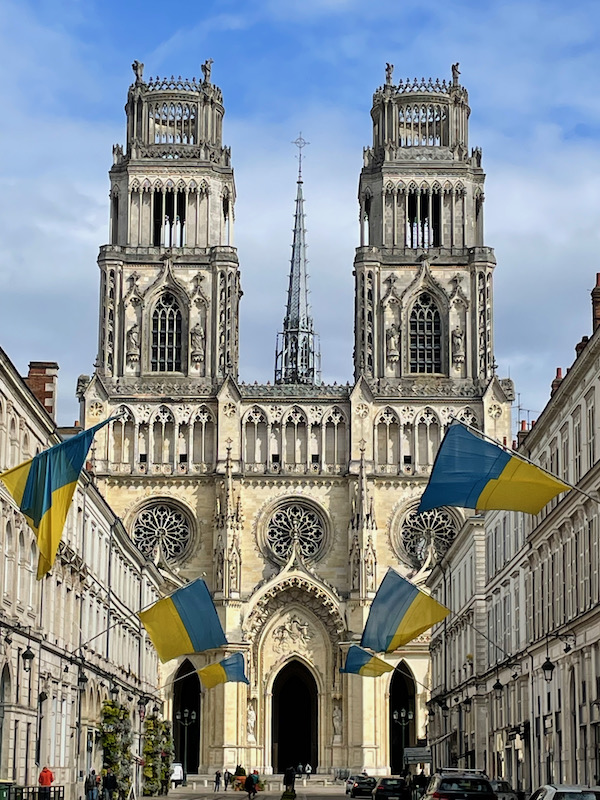
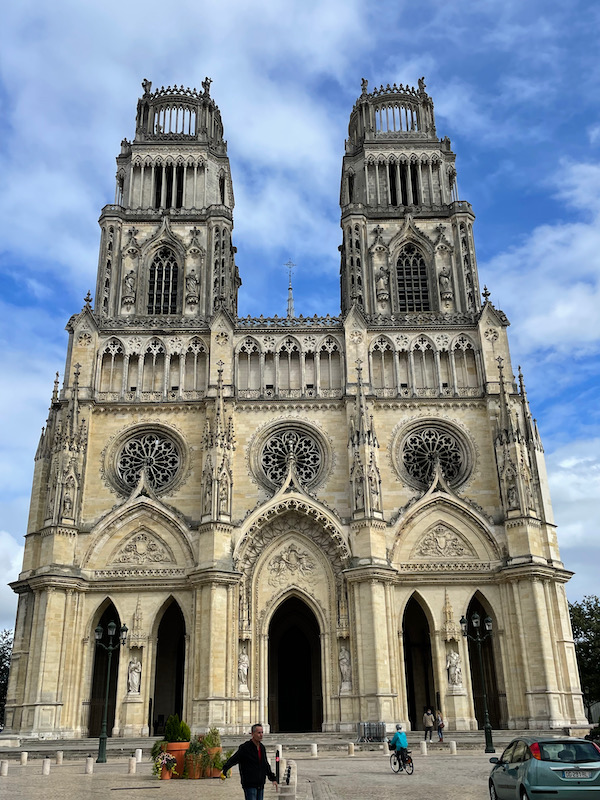
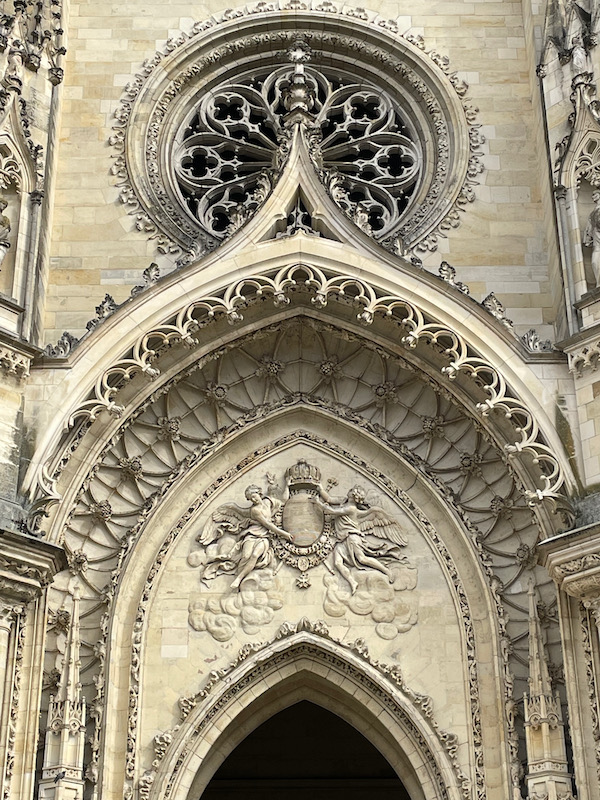
The interior is massive ... very high vaults and massive stone pillars.
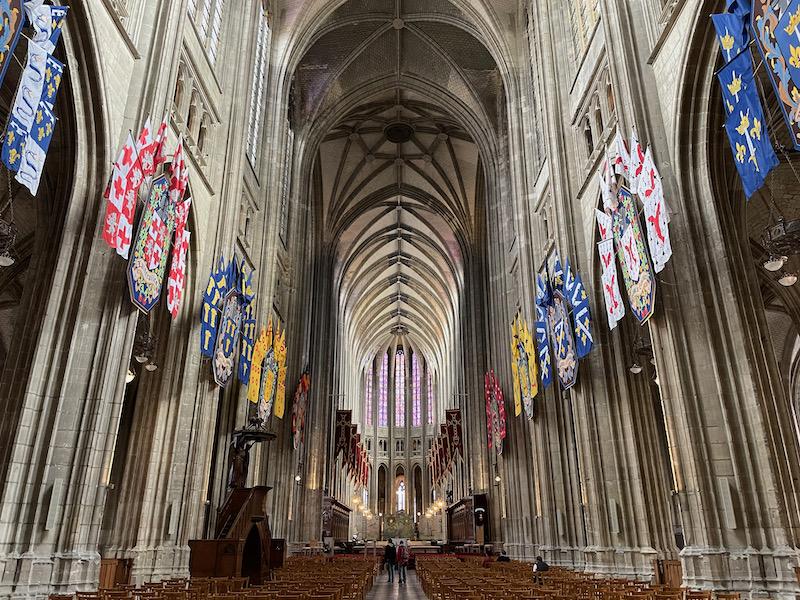
The large western facade is largely glass-stained which tells the story of Joan of Arc.
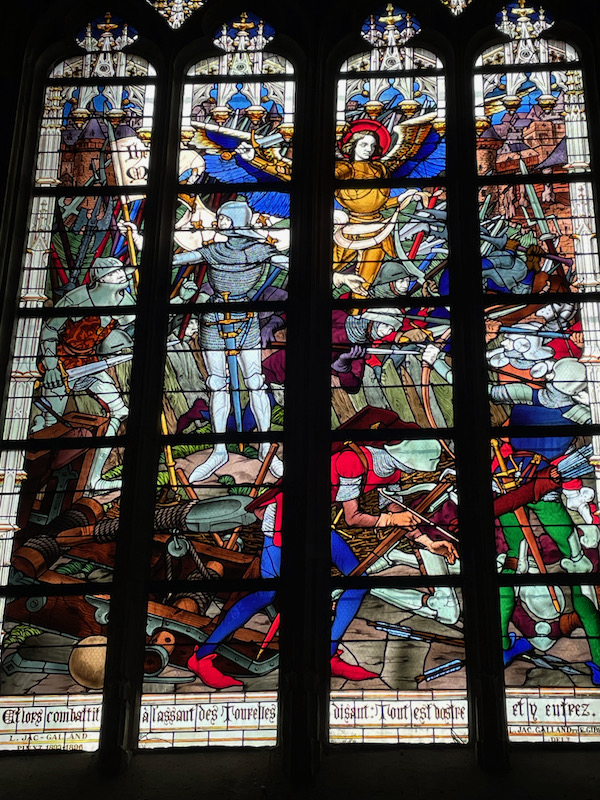
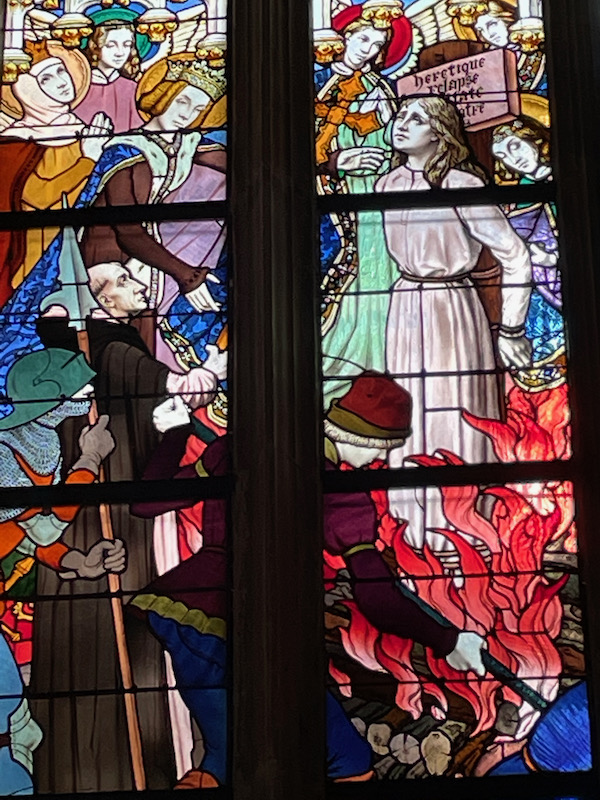
This is the neo-Gothic altarpiece in the South transept, which is carved from Russian oak in 1868. There are 4 scenes around the colored statue in the middle including "The Last Supper", which I show in detail.

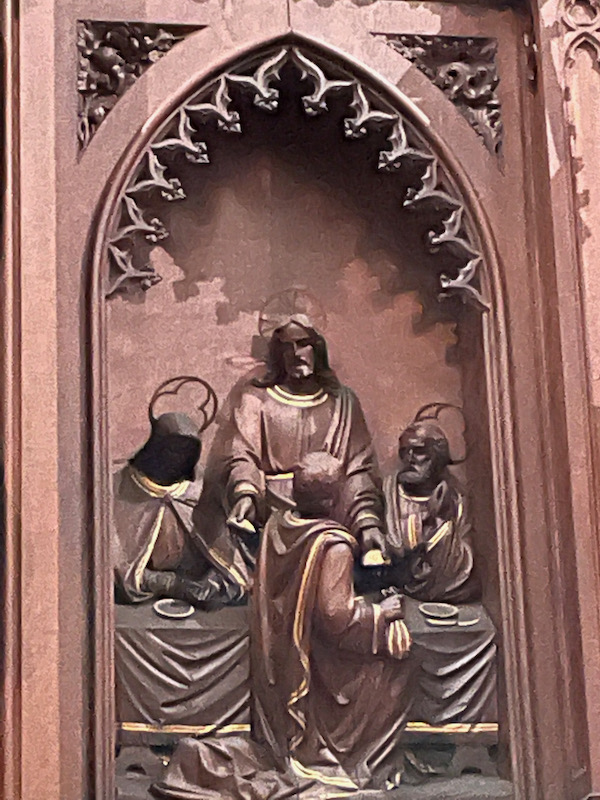
in April 1601, King Henry VI and his wife, Queen Marie de Medici, inaugurated the reconstruction of the cathedral by laying the pillar's first stone. This plaque recalls this event.
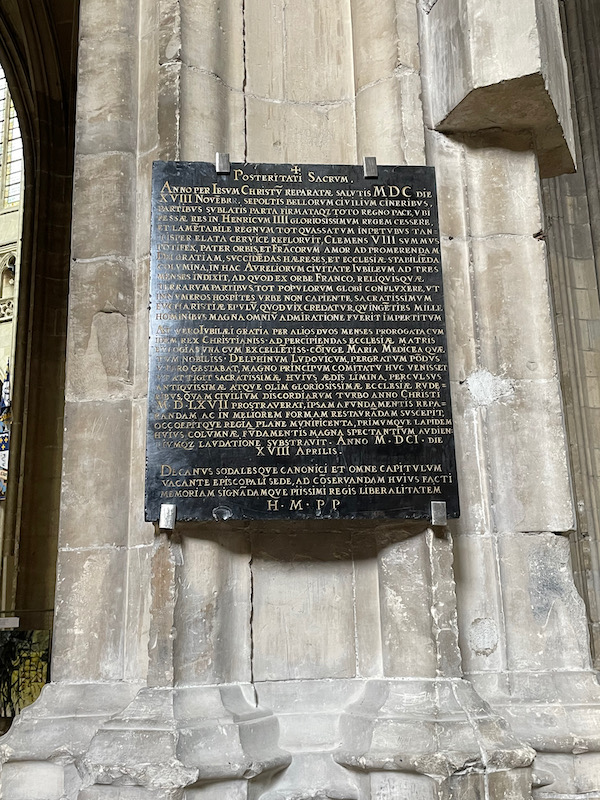
After the transept, going around the apse, the style changes a bit. The ceilings are lower and you can see the bricks in the Gothic vaults. If you look up further where the side chapels start, look at the amount of color in them, compared to the rest of the church.
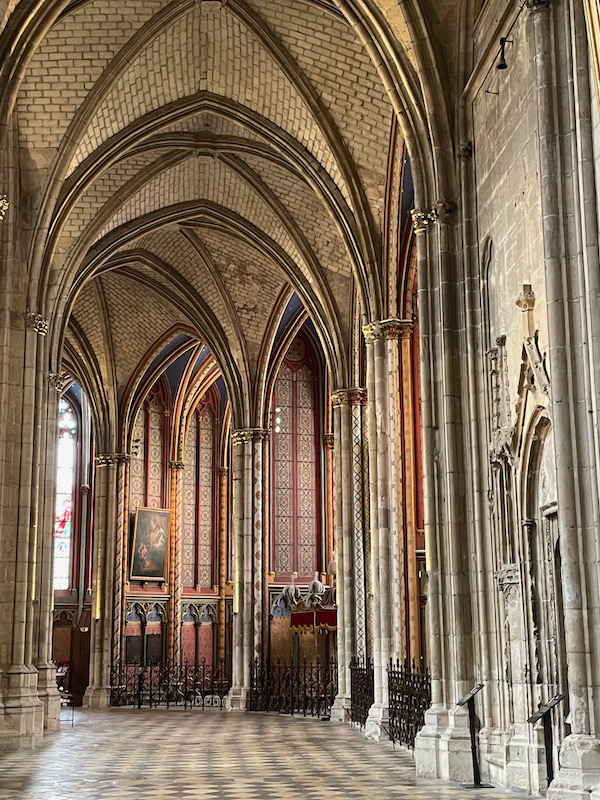
I wanted to show one of the chapels, to get a better sense of the colors. This one, The Chapel of Saint Michael, has a statue showing his killing of the dragon.
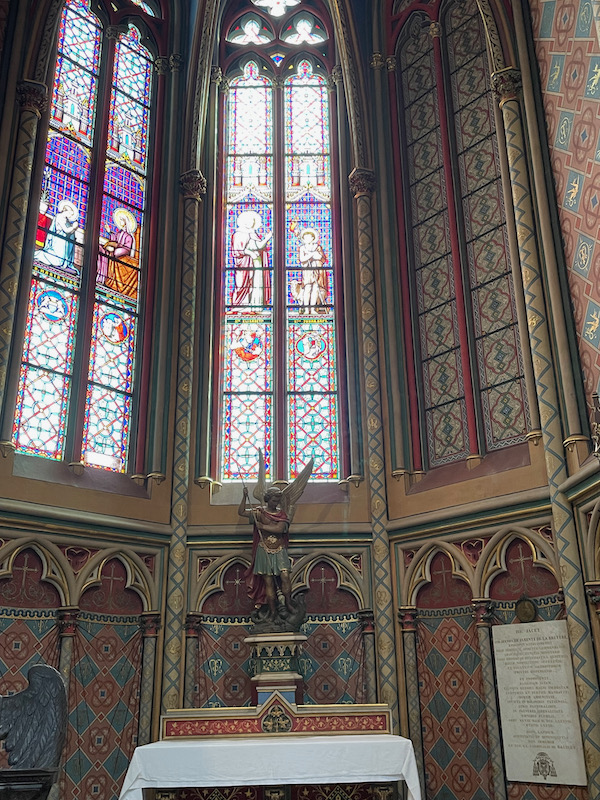
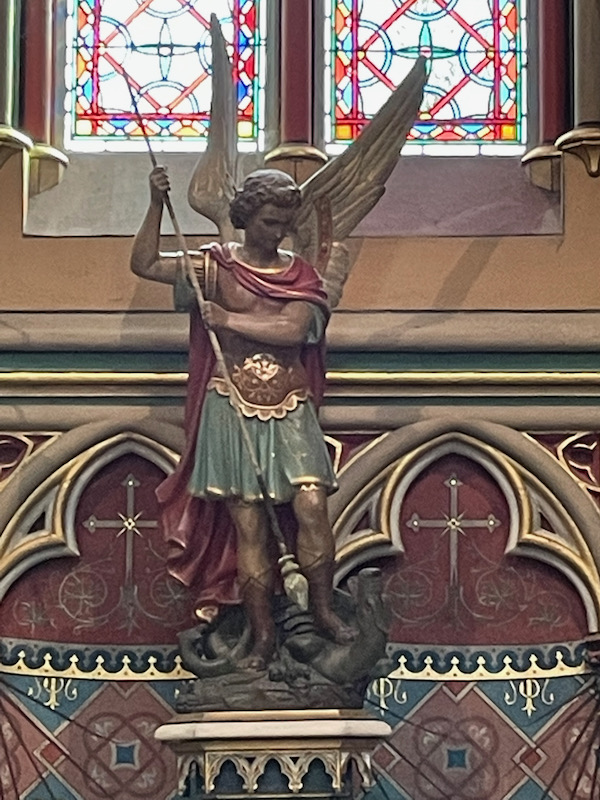
The choir stalls date from the beginning of the 18th century.
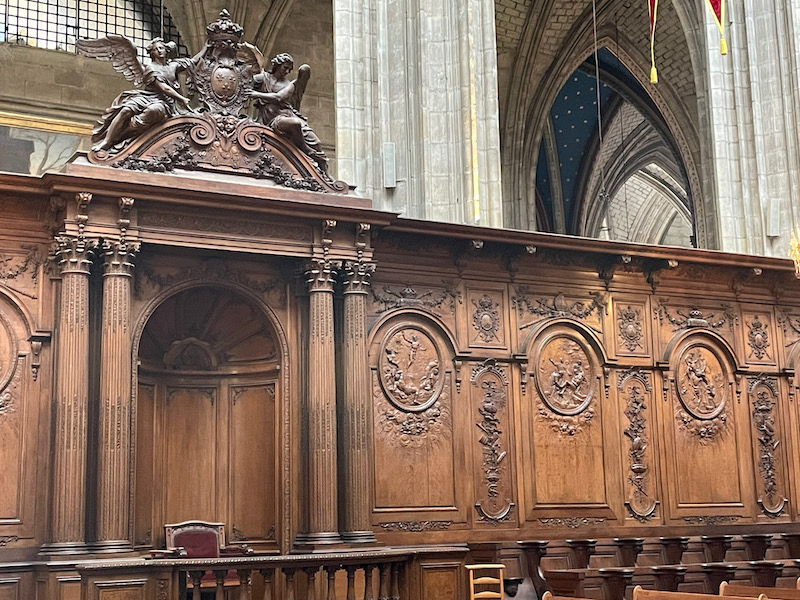
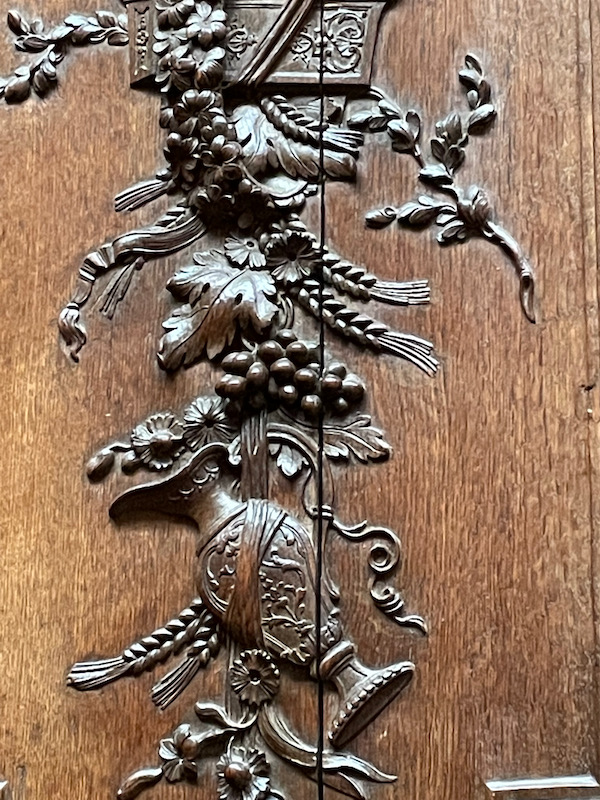
The baptism chapel has a neo-Gothic baptismal font, and an interesting stained glass window. This one, dating from 1875, shows King Henry IV and Queen Marie de Medici visiting in 1599 and being welcomed by the head of the chapter.
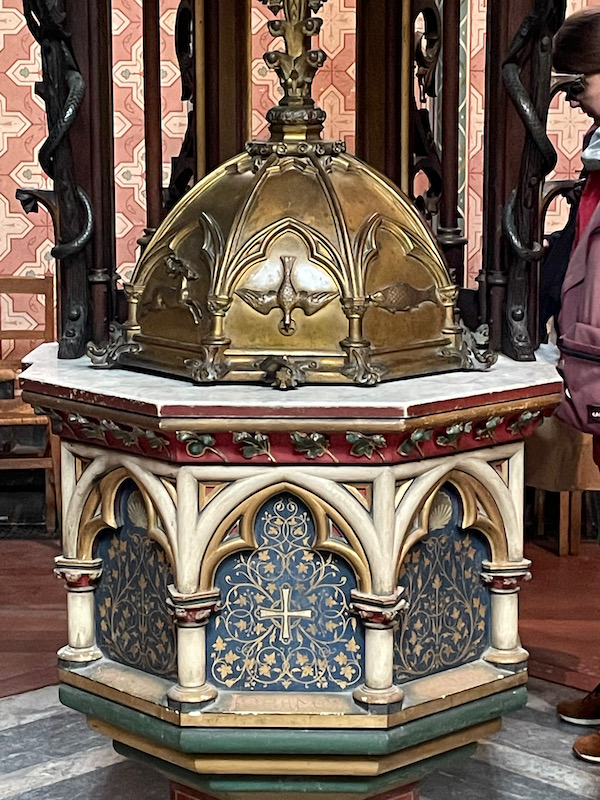
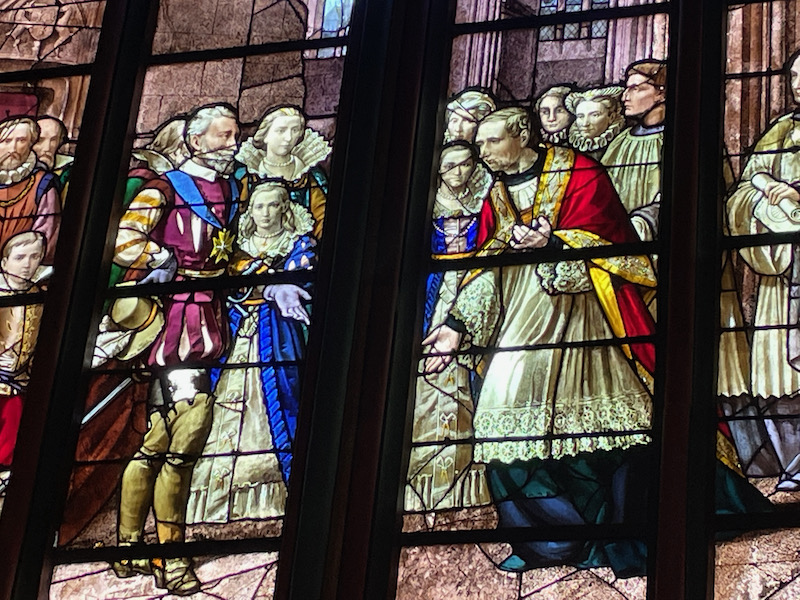
I actually expected a bit more from the Chapel of Joan of Arc. But here we have her on top of a pedestal with 2 lions, and the bas-relief below shows Joan of Arc after her victory at the fort des Tourelles. The somewhat modern stained-glass window has Joan of Arc on a horse.
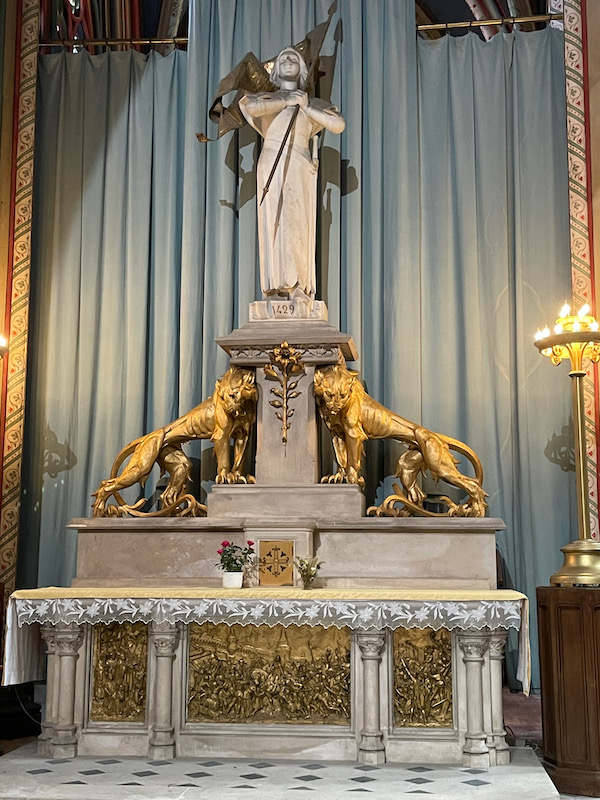
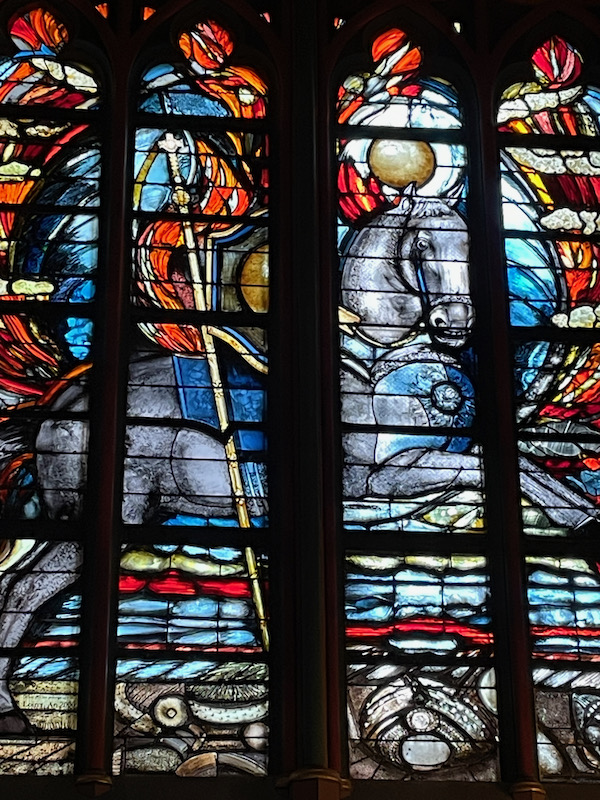
We happened to see these on either side of the Chapel of Joan of Arc ... tributes to the Americans and British who fought and died during World War I and II.
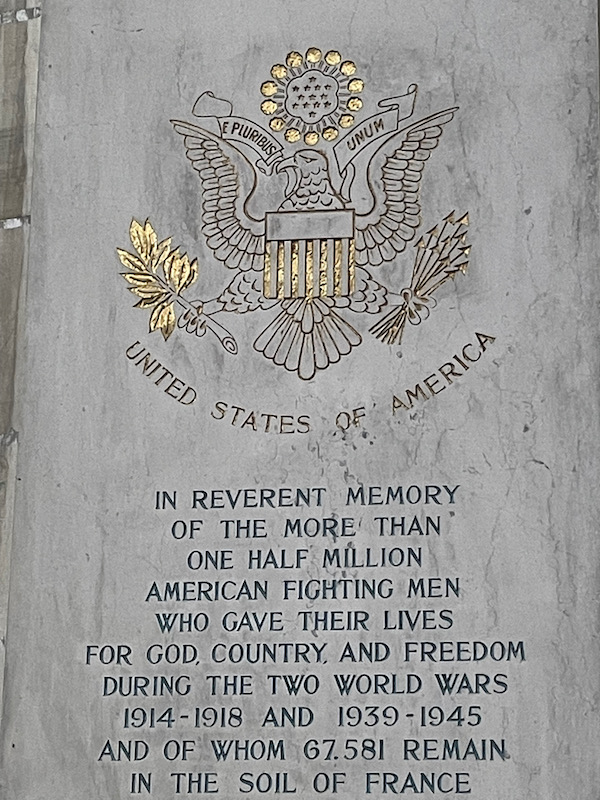
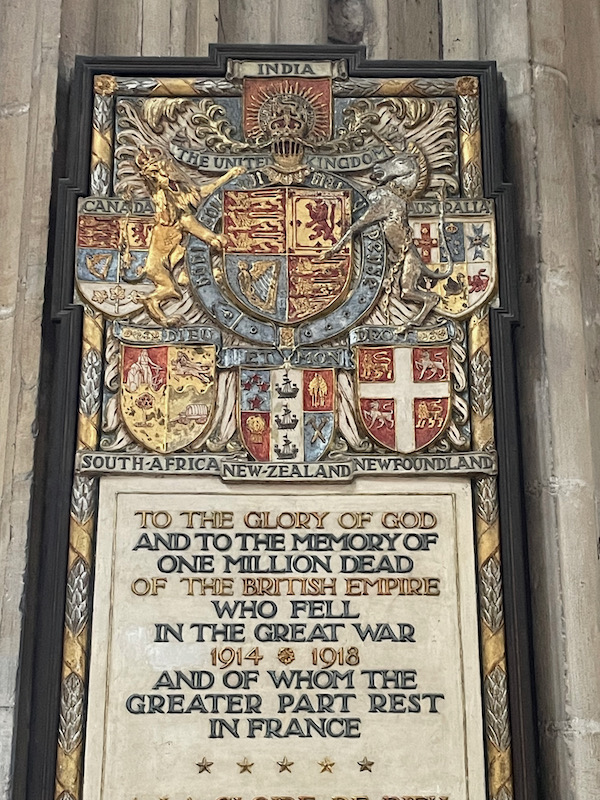
We've now made it to the North transept and another neo-Gothic carved altarpiece, also in Russian oak, which dates from 1872. This one has a colored statue of Madonna and child along with 4 scenes (the detailed one is the Flight into Egypt). The altar itself has a bas-relief showing the Nativity scene.
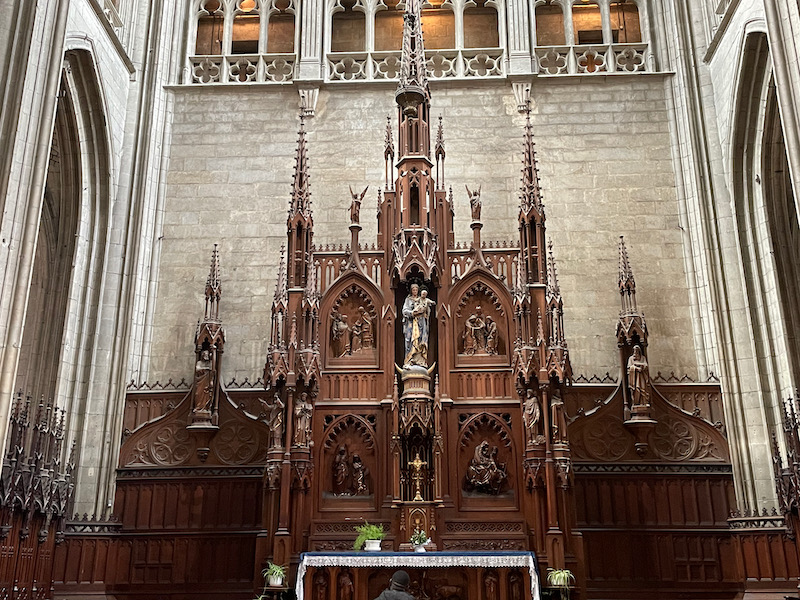
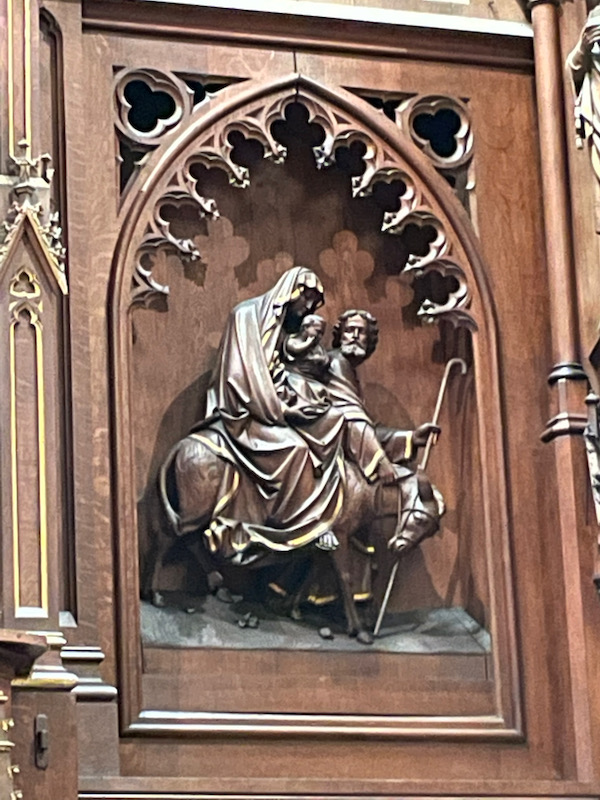
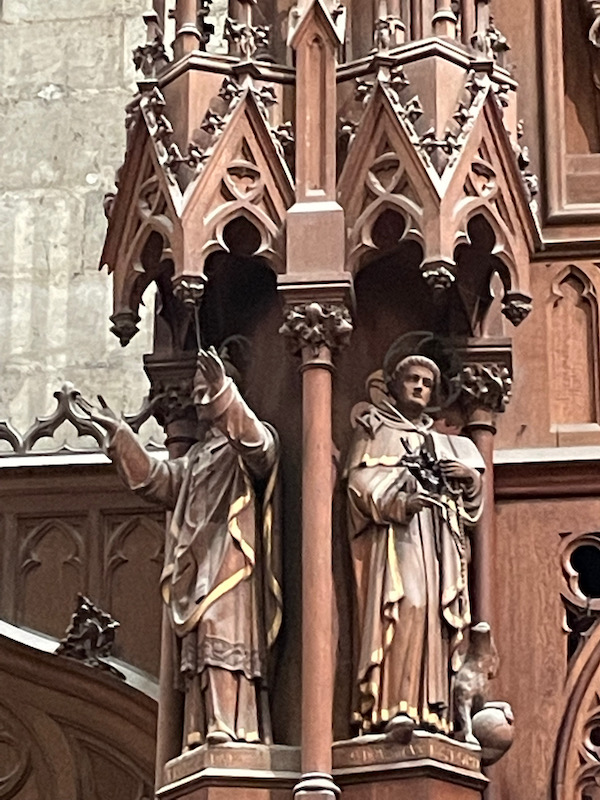
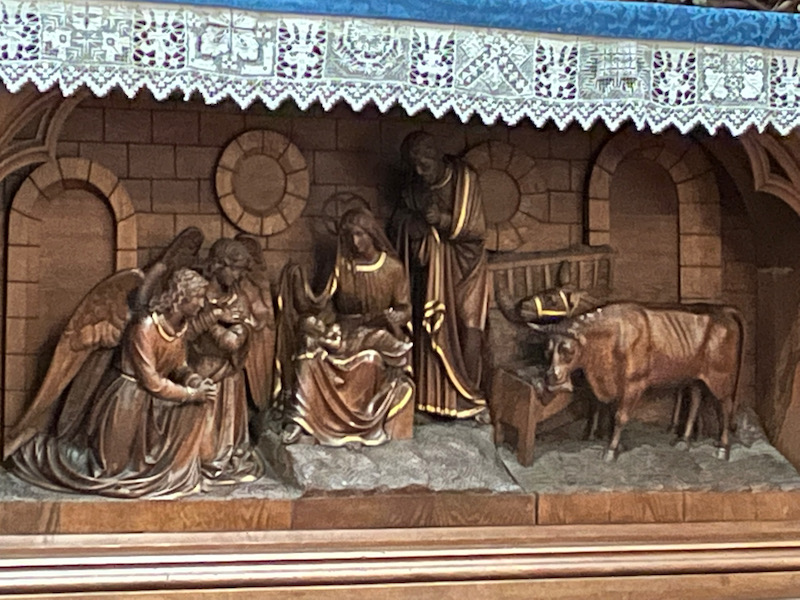
And then I just give a few images of the other exterior facades.
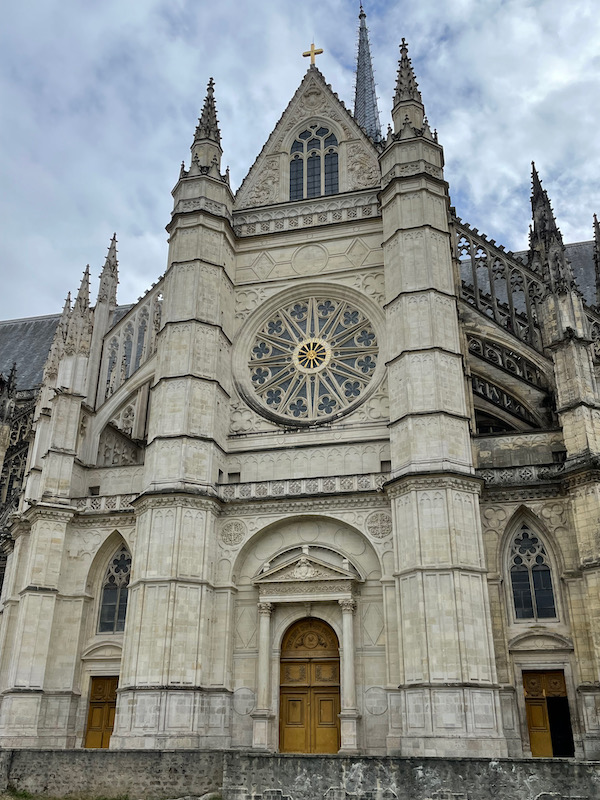
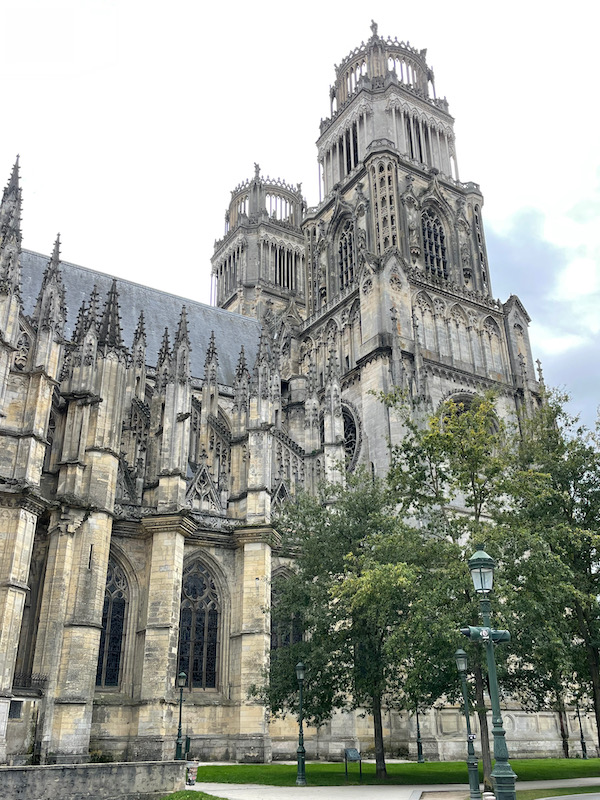
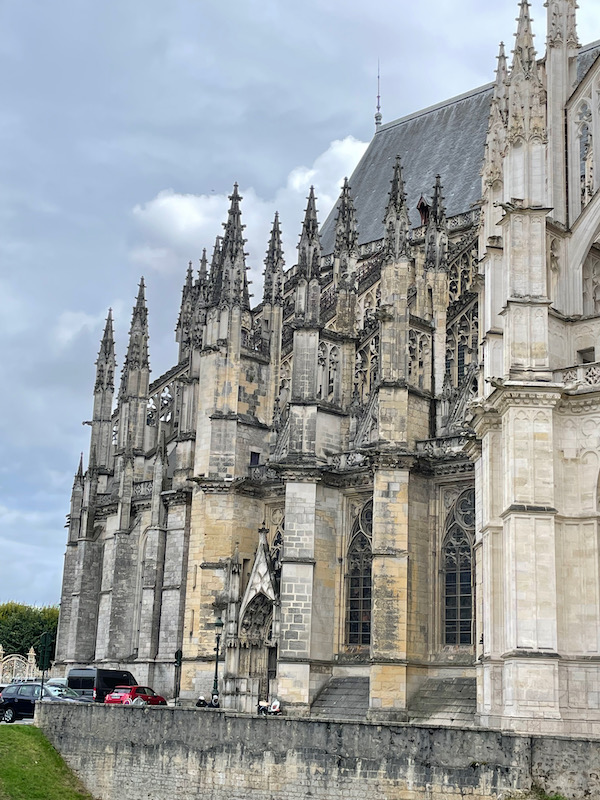
Just outside the church is a lowered area which shows the old Roman fortifications.
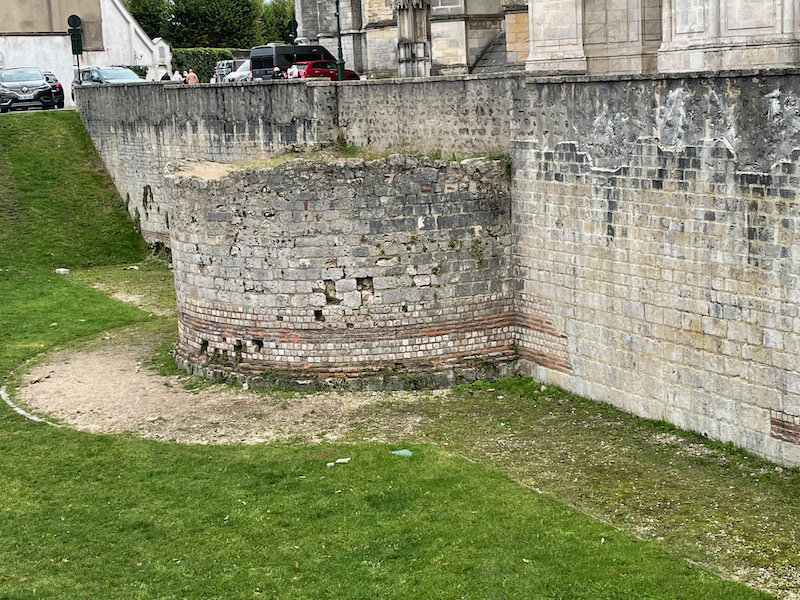
Built during the 16th century, the Groslot Mansion was the former City Hall from 1790 to 1981. They have a few of the rooms open that we were able to walk through.
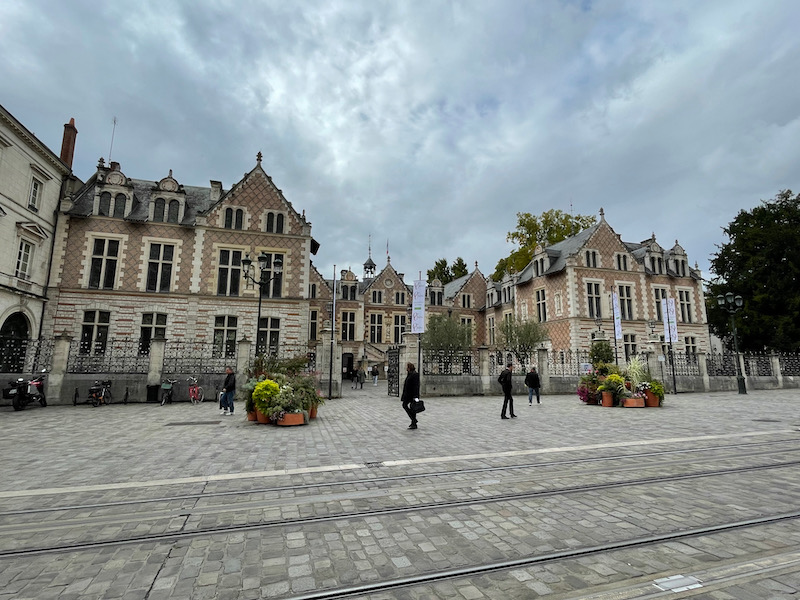
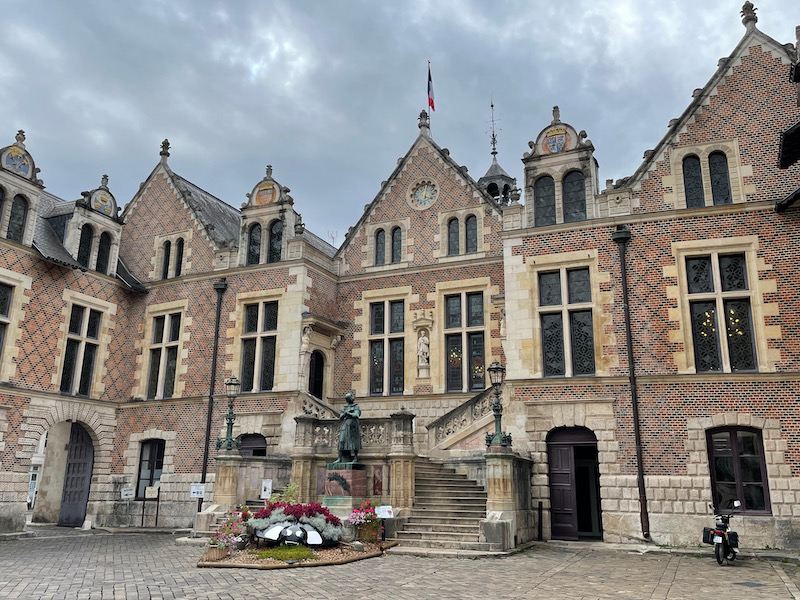
The Reception Room is sometimes called the Joan of Arc room since there are some many representations of her, including the large fireplace that shows key moments of her life.
